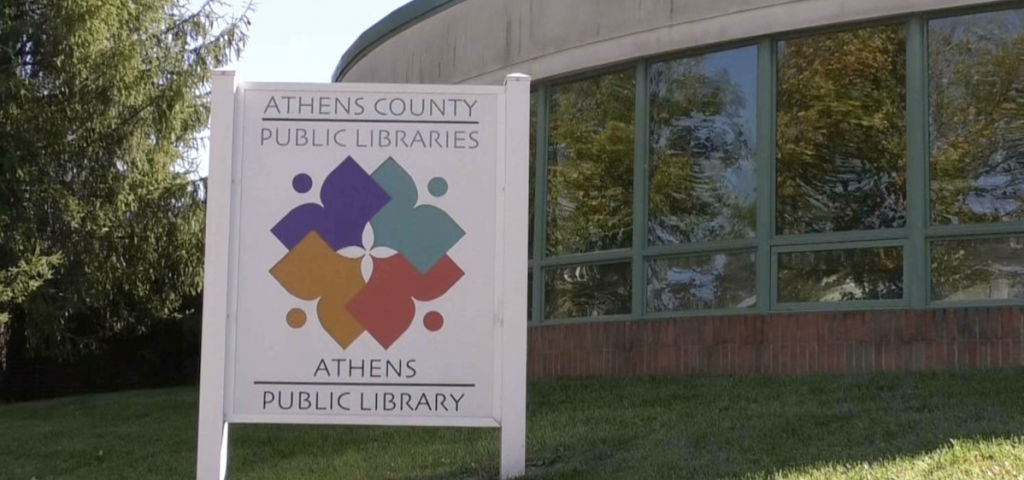News
A state budget proposal would cut millions for libraries in Ohio and eliminate the funding formula
By: David Forster
Posted on:
ATHENS, Ohio (WOUB) — Ohio’s libraries stand to receive $80 million less in funding over the next two years under the state budget bill moving through the House.

And it would restrict where libraries can place materials that deal with issues of sexual and gender orientation.
Even if libraries could absorb the loss of funding without making cuts to staff and services, the uncertainty created by the proposed change to the funding formula would put them in a cautious mode, said Nick Tepe, director of the Athens County library system.
“The legislature is unnecessarily messing around with the structure of libraries in Ohio. This is a structure that has been successful for essentially a hundred years,” he said. “The changes that they’re making are fundamentally going to destabilize libraries and make it harder for us to serve our communities.”
Libraries received an estimated $530 million in state funding for fiscal year 2025, which ends June 30. Gov. Mike DeWine in his budget proposal called for a slight increase in 2026, to $531.7 million, and then a much larger increase for 2027, to $549.1 million.
But the Republican House leadership cut trimmed both numbers significantly. Their budget bill calls for $485 million in 2026 and $495 million the following year.
This is $100 million less than the governor’s proposal over the next two years. It’s $80 million less than libraries would receive if funding remained at the current level.
Tepe said that on average, Ohio libraries receive about half of their funding from the state. It used to be a lot more. Before the fiscal crisis in 2009, most libraries in Ohio received all of their funding from the state, Tepe said.
Funding was cut substantially at the time and it hasn’t changed much since then.
“The dollar amount that is allocated to libraries statewide right now is approximately the same as the dollar amount that was allocated 25 years ago,” he said. “So even though there’s been massive inflation since then, the funding that has come from the state has not kept up with inflation. They’ve kept the dollar amount steady and that has essentially forced libraries to have to turn to their local communities to make up that difference.”
Local levies now make up a large share of the funding that once came from the state. This makes it even harder for poorer counties in particular to make up for additional cuts in state funding, Tepe said.
On top of the proposed reductions in funding, the House budget bill also would change the way library funding is calculated. Since the creation of the state’s library system in the 1930s, Tepe said, funding has been guaranteed — not the exact amount, but the way in which library funding is collected.
This has provided library administrators with some degree of certainty their funding would remain relatively stable. The current formula requires that a certain percentage of the state’s general revenue fund be dedicated to libraries.
The House budget bill would eliminate this funding requirement.
The uncertainty this would create from one budget to the next would make libraries much more cautious about expanding services, Tepe said.
“If libraries are just a line item in the budget and we don’t have that guarantee of funding established in statute, then we no longer have the level of confidence that we currently have that our funding will be stable,” he said. “It’s going to make everybody a lot more reticent to pursue projects that might be of benefit to their communities.”
Tepe also is frustrated with language in the budget bill that would require libraries to place material related to sexual orientation or gender identity in locations that would be inaccessible to minors. He said the language is vague: “It’s completely unclear what they mean by this,” he said.
Vagueness aside, Tepe said this proposal amounts to unnecessary state interference in the library’s core mission.
“Our job is to provide material that is of interest to all of our community, regardless of their background, regardless of their views, regardless of their interests, to provide the best information we can from a variety of different perspectives,” he said. “And then it is the parents’ responsibility. It is the family’s responsibility. It’s the individual’s responsibility to decide what is appropriate for them and for their families.”

